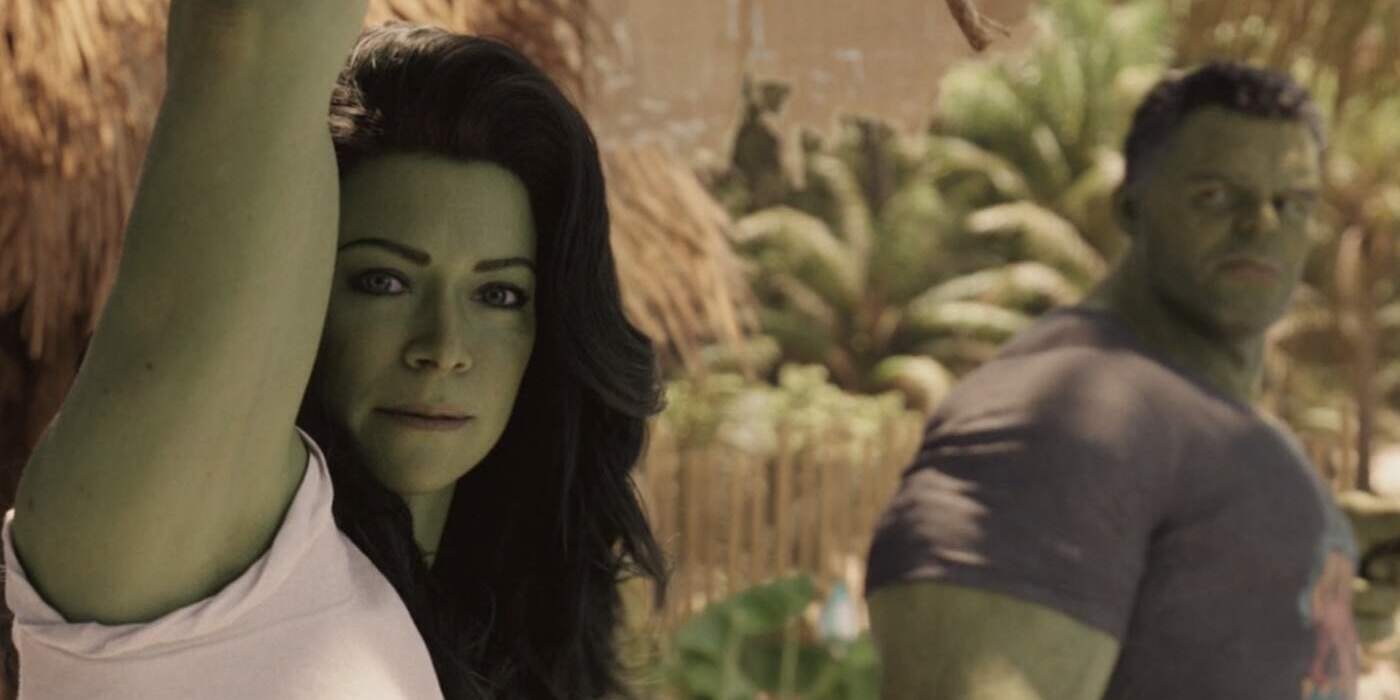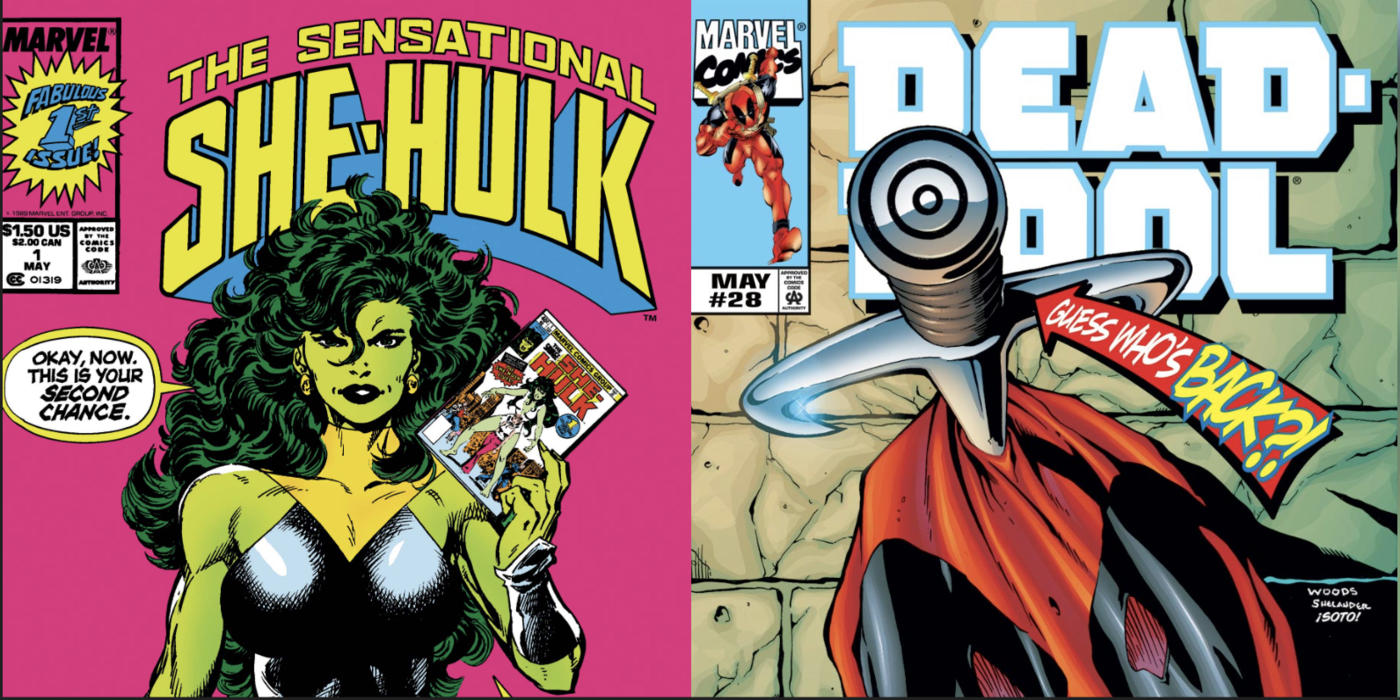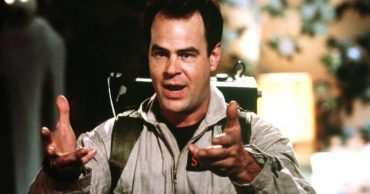Right from the first trailer, the arrival of She-Hulk in the MCU drew unflattering comparisons to Deadpool’s fourth-wall-breaking abilities. After all, Jennifer Walters (Tatiana Maslany) talking to the audience seems like a direct copy of Deadpool (Ryan Reynolds), whose films have made him synonymous with the concept. It’s an understandable reaction in a world where the clamour for female representation in film and TV often seems to mean “make female versions of male characters” to uninspired Hollywood overlords.
Ghostbusters (2016) and Ocean’s Eight (2018) are some recent high-profile examples of this trend, but it’s not just them. Even less popular titles like The Hustle (2019), a remake of Dirty Rotten Scoundrels (1989), and What Men Want (2019), whose original, What Women Want, was led by Mel Gibson, aren’t spared of movie execs’ lack of creativity. But the use of the fourth wall in She-Hulk and Deadpool is an instance where the story is distinctly different.
Why She-Hulk’s Fourth Wall Breaking Wasn’t Copying Deadpool Movies

A closer look at how both characters use the fourth wall reveals a marked difference. In the Deadpool films, the fourth wall is merely an avenue to infuse meta jokes and pop culture references in the movie. As a result, many, if not most, of the funniest jokes in Deadpool, involve fourth wall breaks. In She-Hulk, Jennifer Walters breaks the fourth wall to share her thoughts and feelings with the audience. Her relationship with viewers is that of a friend talking to a confidant. It makes her more relatable and helps the audience connect with her.
For instance, in the second episode, where Jennifer learns her new job at the law firm as a superhero attorney requires her to be in She-Hulk form. She voiced her frustration to the audience that everyone would think, “this is the only reason I got the job,” echoing the well-documented complaints associated with diversity hiring. Compare that to a scene in Deadpool (2016), where Wade Wilson tells the audience, “these timelines can get so confusing” after asking Colossus if he meant “McAvoy or Stewart?” when the metallic giant insisted he come talk with Professor Xavier. She-Hulk and Deadpool may both be breaking the fourth wall, but they are using it differently, and it’s a distinction that goes all the way to comic books.
Who Broke The Comic Book Fourth Wall First: She-Hulk Or Deadpool

Not only is She-Hulk fourth-wall-breaking not a Deadpool ripoff, but she did it first, years before the Merc with a Mouth existed as a character. Jennifer Walters first appeared in Marvel Comics in 1980 in The Savage She-Hulk #1 by Stan Lee. She broke the fourth wall for the first time in May 1989 in her second series, The Sensational She-Hulk, written by John Byrne. In a now-famous cover, she threatened to destroy fans’ X-Men comics if they didn’t read the series.
Two years after the issue was released, Rob Liefeld and Fabian Nicieza introduced Deadpool to the Marvel Universe. But he didn’t adopt the hilarious fourth-wall-breaking he’s renowned for until 1997 in Deadpool #28, almost a decade after She-Hulk did it. The history-changing moment came in a panel where Bullseye asks Deadpool, “how long has it been?” and Wade replies, “Issue sixteen.” It was a little wink that evolved into the defining trait of a character comic book and movie fans adore today.
READ NEXT: Deadpool 3: Why Channing Tatum’s Gambit Can And Can’t Appear
 Follow Us
Follow Us





